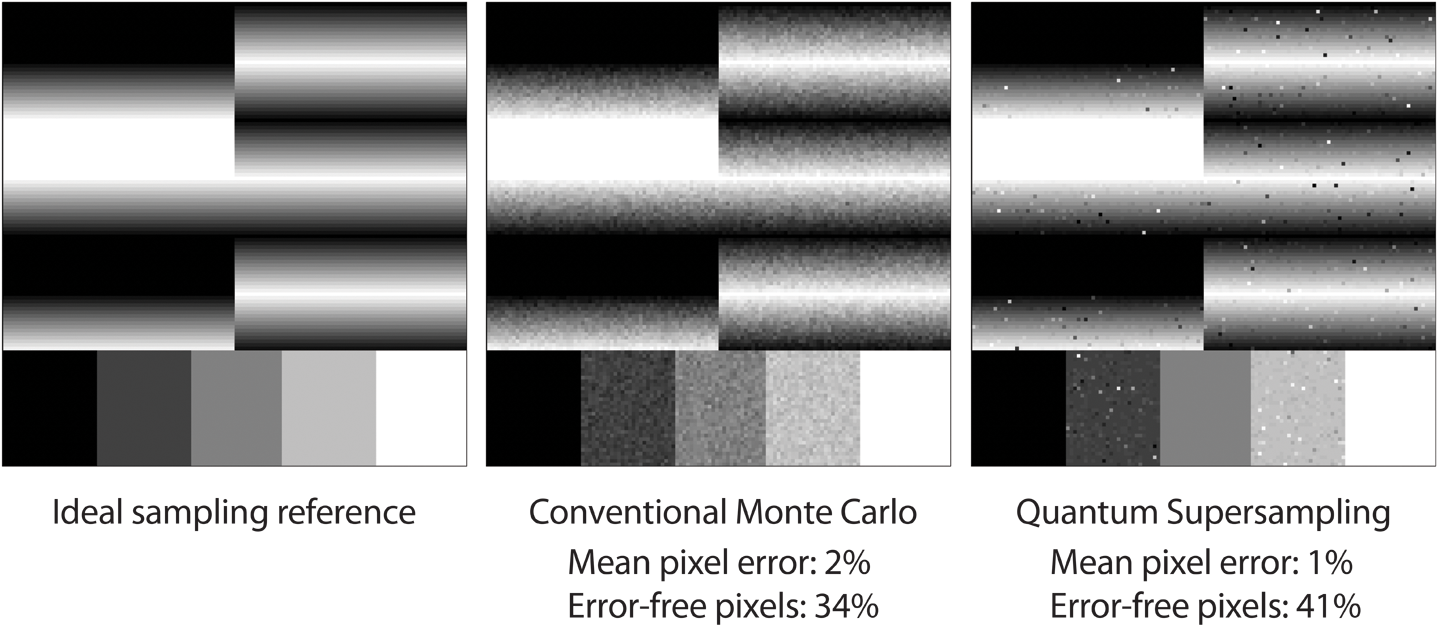Chapter 11. Quantum Supersampling
From pixel-based adventure games to photorealistic movie effects, computer graphics has a history of being at the forefront of computing innovations. Quantum Image Processing (QIP) employs a QPU to enhance our image processing capabilities. Although very much in its infancy, QIP already offers exciting examples of how QPUs might impact the field of computer graphics.
What Can a QPU Do for Computer Graphics?
In this chapter we explore one particular QIP application called Quantum Supersampling (QSS). QSS leverages a QPU to find intriguing improvements to the computer graphics task of supersampling, as is summarized in Figure 11-1. Supersampling is a conventional computer graphics technique whereby an image generated by a computer at high resolution is reduced to a lower-resolution image by selectively sampling pixels. Supersampling is an important step in the process of producing usable output graphics from computer-generated images.
QSS was originally developed as a way to speed up supersampling with a QPU, and by this metric it failed. However, numerical analysis of the results revealed something interesting. Although the final image quality of QSS (measured as error per pixel) is about the same as for existing conventional methods, the output image has a different kind of advantage.

Figure 11-1. Results of QSS (with ideal and conventional cases ...
Get Programming Quantum Computers now with the O’Reilly learning platform.
O’Reilly members experience books, live events, courses curated by job role, and more from O’Reilly and nearly 200 top publishers.

